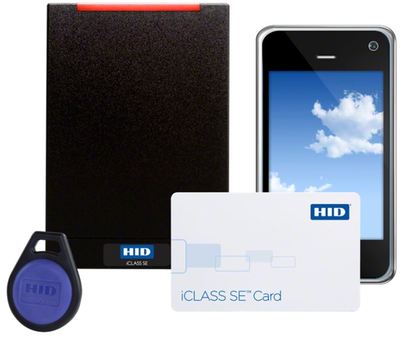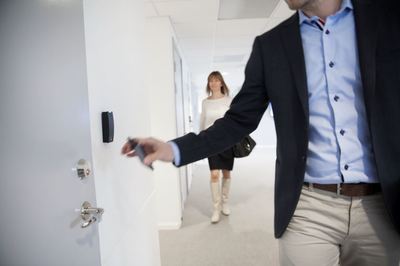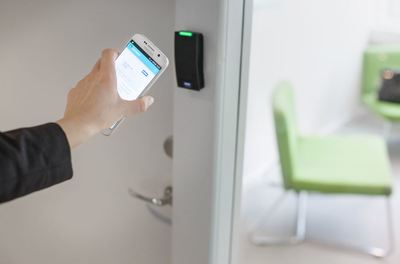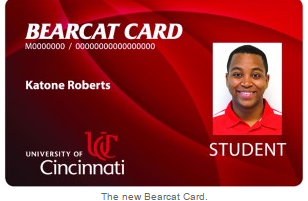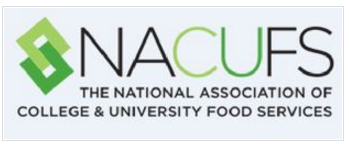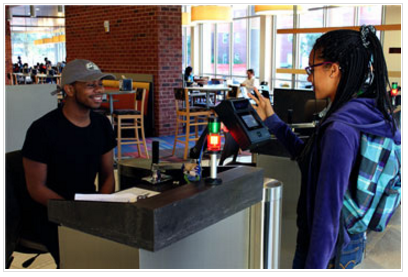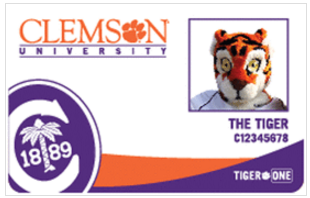|
Are you looking for an affordable solution to reduce season pass fraud? If so, ColorID's RFID Ski Solution may be your answer! Our solution allows resorts to add RFID identification to any current system without significantly altering current processes. How it works is a season pass ID card is personalized in a desktop printer after which the UHF (Ultra high frequency) chip embedded inside the card is programmed using a desktop programmer. Out on the slopes, handheld scanners with UHF readers are used to read the programmed number from the card. Some advantages include:
 About ColorID, LLC Every year, ColorID assists more than 1000 colleges and universities and their project managers personally oversee 700 custom projects each year, including many small and large recarding projects. ColorID offers best-in-class products and solutions, including: contactless, smart and financial cards from every major manufacturer, multiple ID printer platforms; transaction and point-of-sale software and hardware, a variety of handheld devices for identification and tracking applications and biometrics solutions, including fingerprint and iris readers. The company’s manufacturing partners include: Iris ID, HID, Fargo, Datacard, CardSmith, Gemalto, Zebra, NiSCA, Evolis, Allegion, Aptiq, Magicard, Brady People ID, Integrated Biometrics, Oberthur, NBS, Vision Database Systems and many others. Contact ColorID at 704-987-2238 or toll free in Canada and the US at 888-682-6567. Visit ColorID on the web at: www.colorid.com or email ColorID at support@colorid.com.
0 Comments
ColorID recently joined the National Association of College & University Food Services organization as a business partner. The recent implementation of the Biometric Dining Solution has been a highly successful and popular product within the Dining & Food services industry seen in action here at Georgia Southern University.
ColorID plans to introduce this quick and highly effective solution to the NACUFS organization members this summer and offering a webinar presentation that will be sent out shortly regarding the solution.
The following is an updated video from Georgia Southern University. Content shows students entering their cafeteria through turnstiles with biometric verification via iris technology. Video shows students allowed access as well as stopping student from entering due to user error.
Charlotte, NC - April 10, 2014 - With the increasing popularity of unlimited university meal plans, the need to accurately identify students at dining halls has become an economic reality. Additionally, hungry diners are not happy with having to wait in line as those ahead of them fumble in their wallets and purses for their ID cards.
The ColorID Biometric Dining Solution is now in operation on the campus of Georgia Southern University, using hardware and software from Iris ID. Each student looks into an Iris ID camera for about one second and when they are positively identified, their card number is instantaneously transmitted to the meal plan system. "We are thrilled by the response from many prominent universities to the news of this system at Georgia Southern," said Danny Smith, owner and Executive Vice President of ColorID. "It seems that biometric identification has become accepted by today's students as a comfortable and convenient means of identification." Richard Wynn, Director of the Eagle Card program added, "We had a conference of NACAS delegates on campus who applauded as they watched students walk up to the iris cameras, be identified and proceed into the dining hall without interruption." Tim Stahl, Associate Director of Infrastructure at GSU said that the integration with their meal plan system went smoothly, with assistance from ColorID and Iris ID. Tim Ortscheid of ColorID added, "The high security benefits that have led many international data centers to install iris identification for access are now available for high-throughput applications. The cost per user has also come down to a very attractive level." With the experience of installing hundreds of Iris ID systems in high security applications, ColorID has now worked with several universities and integrators to implement these in dining hall applications for both meal plans and cash POS transactions. Significant interest has also been expressed in other campus applications, such as athletic team locker rooms, rec centers and daycare centers. For more information about the ColorID Biometric Dining Solution, including brochures, videos or to request a demonstration, contact ColorID at 888-682-6567 or email:sales@colorid.com. Iris Identification: Known to be the most accurate form of real-time biometric identification, the Iris ID system takes a picture of the subject's eyes with several special cameras within the Iris ID device. Since it is only a camera, there is no harm to the user. Operating at a distance of 12"-16", there is also no contact with the device. Enrollments are performed during the time it takes for an ID card to print during orientation. Unlike other forms of biometrics, iris identification has a very small number of outliers and the highest possible degree of accuracy. The iris is the most complex and randomly chaotic biometric feature of the human body, so the chance of two persons having the same iris pattern is 1 out of 10-78. Even identical twins do not have the same iris patterns.
ColorID is presenting at the 2014 NACAS South Annual Conference this April 15th, 9-10am. ColorID will present on their implementation of the ColorID Biometric Dining Solution at Georgia Southern University (GSU).
Description of Presentation: After decades of promises, biometric identification systems have finally arrived. Long used for high security applications, iris identification has developed into the fastest, most accurate and affordable biometric identification system, followed by improving fingerprint and palm vein systems. Learn more about biometric technology and how your school can move people through lines more quickly and with more accuracy at dining halls, rec centers and team locker rooms.
We will present a detailed description and videos of the full scale iris identification system that GSU is using for meal plans, in their Dining Halls. The presentation is designed for new and experienced attendees and will include live demonstrations of the technology. Datacard unveiled its latest direct to card printer called the SD460. This direct to card printer will be replacing the durable and long tenured SP75 Plus. Although many have been clamoring for a newer version of the SP75 Plus, there is no denying that the SP75 Plus was a workhorse and excellent direct to card and laminating printer. While the first version of the SP75 was unsuccessful due to laminating module issues, the SP75 Plus fixed those issues and provided an industry with a stable direct to card and laminating printer.
The new SD460 printer is slated for availability in Q2 of 2014 and offers a variety of new features. One such security feature is an industry first "Tactile Impression Die" that comes in generic or customizable designs. After the printing process has been completed, the die is pressed into the card surface leaving a permanent impression of the die into the card. The SD460 is based off the current SD260/360 printer line for the printing process whereas the laminating module is completely redesigned and new. Additional advanced features include easy load lamination supplies and the ability to use several types of protective coverings: DuraShield Overlay or DuraGard Laminate in .5 or 1.0 mil thicknesses. Print & laminate speeds are an impressive 200 cards per hour as well. Contact ColorID today to learn more about the latest addition from Datacard. Unit will be available in Q2 of 2014. ColorID managed Clemson Universities re-carding project back in the Fall of 2012. Our friends at CR80news.com wrote up the following article about the project:
The following article on the Winthrop University IrisID project was written and supplied by findBiometrics.com. To learn more about implementing IrisID biometric solutions on your campus, contact ColorID today!
Interview with James Hammond, Associate Vice President for Information Technology Winthrop University fB: Can you tell us about your decision to roll out iris biometrics at your university? WU: Sure it is actually a pretty involved story. We had been using card access systems for door control for quite some time, probably 15 years or so to control access to the facility primarily using magnetic striped cards as well as prox cards and that was just part of our regular university ID cards. So that gives you a little bit of history of where we are with general security and access control. However recently, going back to around February/March time frame, our director of our early childhood laboratory school contacted me about security. Now, an early childhood laboratory school is basically a kindergarten and preschool that is run within the university environment. It is called a laboratory school because our education majors can participate, they can intern there, they can observe, so it is kind of a laboratory school for our education majors but at the same time we are providing the kindergarten and pre-school schooling to community children at our facility. So the director of that facility contacted me about security. Her concern was heightened by the recent Newtown shooting, which was not only horrific but it was also different than some previous school shootings, in that this one involved an even younger population than what we have seen in the news before. So it had hit a new nerve with regards to security and school safety and so forth. We had already been through this with Virginia Tech and of course our school, like most universities, re-evaluated their security posture but when Newtown happened it was kind of like re-re-evaluating the security posture particularly with the laboratory school in mind thinking about the younger children at the kindergarten and preschool. So with that in mind we had to think about how that laboratory school was different than the rest of the university. fB: So you had to examine your existing security system and evaluate whether you needed to think about something a little bit different? WU: Yes. Our problem was that at the laboratory school you have to permit parents, authorized babysitters, authorized grandparents and other authorized caregivers to be able to pick up those children at any hour of the day. So how do they get into that facility to pick up their children? The challenge is that you've got teachers in that facility who are watching the children, they are not manning the door… they are watching the children. So if the door is locked who was going to go open that door? Well it would be a teacher, but the teacher is keeping their eye on the children, so there is a bit of a conflict. A better system was needed for being able to let people in. The first obvious choice was like the rest of the university: to issue an ID card and let people swipe in to pick up their children. But because it was a different population, we thought that it would be more of a challenge than with our college student population. That would be parents who are not registered as students, who are more likely to forget their ID cards, and possibly not be as responsible keeping up their ID cards, but still needing to get into the facility when they forget their ID cards. We just decided that the ID cards weren't a great idea for that population. To put another wrinkle on it, ID cards have always suffered from one, well two, very serious shortcomings. One: there is always the possibility they can be forged or copied or counterfeited; and number two: if you lose the card or if the card is stolen, that card continues to work until the person reports it to us and we don't know how long that is going to take. So there is a window of time where there is high risk because that card is a valid credential that can be used to access that facility. Fb: That is a major flaw for this type of application. WU: Yes, because if you've lost the card you may not know it, or if the card was stolen you may not know it, or you may not have had the presence of mind to report it. Until we know it is lost or stolen we don't know to inactivate the card. So with that in mind we decided ID cards just aren't going to be the instrument we are looking for in this laboratory school where security is of the utmost importance. The next step naturally leads us to biometrics. Now, me not having looked at biometrics in quite a few years the first thing that came into my mind was fingerprint scanning and I think that is what the average person would think of with biometrics. fB: So you did look at other biometrics besides iris initially to expand your search? WU: Exactly! So I looked at fingerprints first and I was really unhappy with what I was seeing. Number one: you are seeing a product that you have to touch, and just a couple of years ago we came out of a pandemic scare called H1N1 swine flu and all of the universities were on heightened alert because we had to have pandemic plans. We were putting hand sanitizer all over the place and it was quite a big deal so thinking about one more thing to touch that everybody else has touched wasn't attractive because we'd have to wipe it down all the time, people would want to wipe it down before using it kind of like the cart at the grocery store where they have the hand sanitizer and all that. And then I found out the occurrence of false positives on fingerprints were measurable, it was significant enough to be measurable and I don't like that. We would want to use it as a direct measure of authentication. In other words, I want to present a biometric and I want to be let in. I don't want to have to present a biometric plus a PIN or a biometric plus an ID card. That would be two factor authentication, and now we were getting back to some of the original problems that we were talking about. So I was interested in a single factor authentication using biometrics that I could have faith that would work. So I looked at other like hand geometry scanners, palm scanners, and I wasn't getting anywhere on research on those that was pointing to it being a viable method. Then I found out a local distributor that we already had a relationship with was a distributor for the Iris ID hardware and they invited me up to their office. I went up the same day that I talked to him because I was so interested and I didn't realize that there was a commodity out there that would be priced affordably enough for our university to look at. We looked at it and we saw the iCam units that Iris ID manufactures and I saw it being used in single factor authentication and I was shown the data that supports their claims of high accuracy, negligible chance of false positive based on the number of data points that is used within an iris, I think 252 data points, and I think less than 1/10th that for fingerprint. So I was thinking that iris is probably ten times more accurate, more unique than fingerprint, and that sounds pretty good, and I don't have to touch the iris scanner, that sounds pretty good, and it was fast, I was watching how fast they could use it and that's pretty good, the software looked like it was manageable. So we got the units in, assigned a team and we decided to integrate it ourselves rather than trying to find a company out there to do the integration. We were very familiar with our card access system which is a company called Lenel which is a fairly well know system for access control. fB: Yes I know them well. So you took on the integration yourself and that went smoothly? WU: Yes and with just 4 of us and we were able to get that done in a little more than 2 weeks. I don't think that is a typical success story so we are pretty proud of it. It does show that the technology integration is very doable, very workable and once you understand it, it is actually trivial. We did all that and we started having our ID office enroll people with the iris scanner as they came into ID office when they came in for other business. So if someone came in with a lost or stolen ID card we would have them do the iris enrollment at the same time. We prepared a little flier that listed the benefits of the iris scanner; we even branded it and called it, we called it Eagle Eye Station because we are the Winthrop Eagles so we kind of branded it like a Winthrop product. fB: You know James I really like that thought because you stressed the benefits and actually made it fun for the end user by naming it something that the university could relate to. That is quite smart. WU: Absolutely. And then we had a little happy accident after that. We had just got our material together so that when people asked about it we could explain it to them and we figured we would give them something to read and we came up with that brand name- Eagle Eye Station- and just as we got started, we were starting to formulate a communications plan on how we were going to let people know what was going on instead of people walking into the ID office and being kind of surprised by it. We were just going to get that communication plan going and before we had a chance to even finalise that plan, a student came to us who was taking an entry level mass communications classes, probably a junior level class, and said for their class project she wanted to do a video on the iris scanning project. So she did her training video on that. Well, it turned out that it was good enough and got out on the internet and so we started to get this accidental positive PR out there and the local student newspaper picked it up. So the communications plan happened and unfolded before we even got a chance to finalise it. We were just fortunate that it happened in a positive way. fB: That was fortunate, but you also had a plan in place to educate the student population and I think that is very wise as well. WU: Yes and if I was talking to anybody about this, I would tell them that they need to get their communications plan sorted out ahead of time. We were fortunate that something else happened that was just as a good and it saved us but what if someone had come to us with a negative PR piece before we had a chance to get our PR out there? So it is very important to jump on that quickly. fB: Thank you for mentioning that. WU: So the positive PR was out there among the campus population, the student newspaper picked it up and it was kind of an interesting piece because it highlighted the high technology aspect. They got quotes from us giving the benefits. Then the CNN folks found it on the internet and were doing research so they contacted us next. We told them that we were preparing to do mass enrollments with the iris scanners as our summer orientation was coming up where the freshman come for a couple of days in June, they get orientation, they get their ID cards, they do their registration, they get exposed to the campus, they see a number of things about the campus all within a few days of time. So we would be enrolling about a 1000 students during these orientation sessions and suggested if CNN wanted to come down and film, that would be a perfect time to see it going on enmass. So that is what they did. We had set up all our iris scanning stations temporarily so that it could handle that number of people. So literally we lifted up Iris ID station and put it at another location on our campus so that it could handle these long lines. The lines were going smoothly, the cameras were rolling, even the local cable station came and they ran it too. fB: Wow that is quite something! And everything went smoothly? WU: It did and I think it's because we tried to tell everybody ahead of time among our employees what to expect, what kind of questions to expect so that they could understand how the university responds to those questions, because there are concerns about iris scanning and I totally respect that. We've had questions on what we do about people that have concerns and we have a plan in place for that as well. So people who are concerned about getting their eyes scanned we give them that sheet of paper that has in bullet points on why this is a good system and we try to explain to them face-to-face on why we believe it actually protects their identity rather that threaten their identity. We believe that it actually protects by guaranteeing that whoever presents themselves is actually that person so your identity is guarded against forgery and theft. We explain how the iris systems work in regards to taking a picture of their eye, it's not some sort of weird x-ray or laser beam or whatever, it's just a high resolution picture of their eye and that we don't store that picture. Instead it gets digitized, it's broken down into 252 data points and then it is encrypted into the database so that I cannot go back and pull out a picture of your eye. I cannot do that. Just like I cannot go back and pull out your password because your password is encrypted, all I can do is match it up against something else for authentication. So we explain how the technology works, we explain any questions that they might have and if they say they don't really want to do it we say it is fine and they don't have to. You don't have to do it as it is not a forced enrollment, but that you might find in future that access to some places on campus may not be as convenient, but that you are not going to be excluded, but that you might have to ring a doorbell and wait for somebody or you may have to use some other alternate form of access. But if you don't want to do it you don't have to do it. fB: I would think though with younger student populations the acceptance rate would be quite high for new technology? WU: It is and I think that has worked in our favour because out of 1600 faculty and students enrolled so far since we started this program in April fewer than 10 have declined. fB: That makes sense to me. WU: We're talking about a percentage of a percent so it is quite small. If someone comes along and vocally objects we hope to be prepared for them and that happens. And we want to be able to demonstrate that we are not forcing anybody and they don't have to do it if they don't want to and that this technology is actually here to do two things for you. Number one: protect your identity more which means protect the resources behind that door more whether it be small children, dangerous chemicals or whatever it is that you are trying to protect behind that door that you are securing. So you have high security and identity protection. And number two: high conveniences, which means you don't need to worry about carrying around an ID card to access a facilities such as the gym or trying to find your ID card when your hands are full. You just have to look at something and you have access with high convenience and high security. fB: Where do you see this technology being used at your university in the future? WU: I would say anywhere the director says we need high security so as in the childhood laboratory where we absolutely want to authenticate people getting in there, meal facility where the convenience is important because you don't want to be tethered to your ID card that you might have forgotten. Also sports facilities, the library…really anywhere where there is a lot of traffic and you don't want to have to run back to your dorm to get your ID card. fB: Thank you very much James. Your deployment sounds absolutely wonderful in terms of the way it unfolded congratulations on that. WU: It has been my pleasure Peter ColorID recently supplied one of its Higher Education customers, Winthrop University with the latest and greatest biometric reader on the market today: IrisID by LG Electronics. Check out the below article from CNN regarding how Winthrop University is utilizing their IrisID cameras on campus. ColorID is the United States Technical Distributor for the IrisID and if you'd like to learn more about Iris technology and the benefits of it contact us today.
ColorID will be hosting a web presentation for the Higher Education market on "Migrating to Contactless Technology: What You Need to Know in 2013", Wednesday February 27, 2013 at 2:00 pm EST (additional dates to follow).
If your campus is thinking of migrating from mag stripe or prox cards to contactless smart cards; you know there are many decisions to make before you place your first order. Which technology, what manufacturer and what type of applications do I need to consider? We will focus on the factors you need to consider in order to make the right decision. David Stallsmith will be presenting, and he is a regular speaker at NACCU and other campus card conferences and has helped individuals and groups at hundreds of universities, hospitals and government agencies understand card technology. Topics in the presentation:
|
Categories
All
Archives
July 2020
|
WE'RE HERE TO HELP.
|
ColorID has spent over 24 years serving the ID Industry with top-level sales and support to build the ultimate trust with every customer.
|



